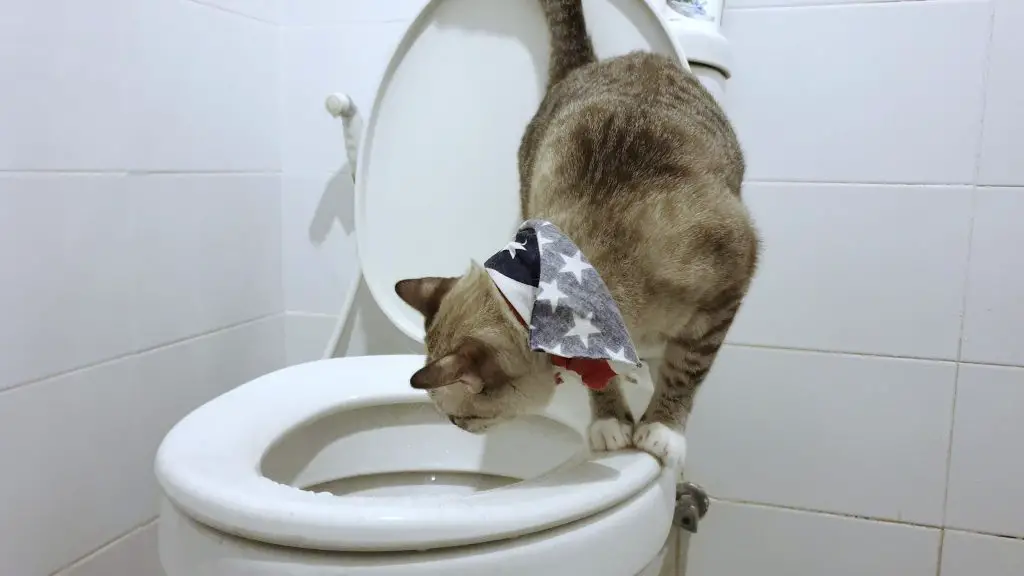No, it is not ok to flush cat litter down the toilet, as it can cause clogs and damage plumbing systems. Flushing cat litter can lead to blockages, backups, and costly repairs.
Additionally, cat waste may contain harmful organisms that can contaminate water sources and harm wildlife. It is best to dispose of cat litter and waste in the trash, using sealed bags to minimize odors and prevent leakage. There are also eco-friendly cat litters available that are biodegradable and safe for disposal in the trash.
Taking proper precautions will help protect your home’s plumbing and the environment.
**Is It Ok To Flush Cat Litter Down The Toilet?**
Is It Ok to Flush Cat Litter Down the Toilet?
Flushing cat litter down the toilet may seem convenient, but it poses significant environmental risks and concerns. One major concern is the potential contamination of water sources due to the high levels of bacteria, parasites, and pathogens present in cat feces. These harmful substances can find their way into rivers, lakes, and oceans, negatively impacting aquatic ecosystems. Additionally, cat litter often contains additives, such as perfumes and chemicals, which can further disrupt the balance of water systems.
Instead of flushing cat litter, consider alternative disposal methods. Scooping and bagging the waste and placing it in a sealed trash bag is a safer option. There are also specialized cat waste disposal systems that use digestion or composting processes to safely manage cat waste. These alternatives not only protect the environment but also minimize the risk of clogged pipes and sewage system damage caused by flushing cat litter.
**Environmental Risks And Concerns**
Environmental Risks and Concerns:
Flushing cat litter down the toilet can pose significant damage to the plumbing system. The litter, often made of clay or sand, can clump and create blockages in the pipes, leading to costly repairs. Moreover, the flushing process can also disrupt the delicate balance of the contamination of water sources. Toxoplasma gondii, a parasite commonly found in cat feces, can survive water treatment processes and contaminate natural water bodies, posing risks to human health.
Furthermore, the impact on marine life cannot be overlooked. When litter enters water bodies through sewage systems, it can harm marine organisms. The toxins and chemicals present in many cat litters can disrupt aquatic ecosystems, affecting fish, coral reefs, and other marine life.
Considering the potential environmental risks and concerns associated with flushing cat litter down the toilet, it’s crucial to responsibly dispose of it in designated waste bins or follow recommended guidelines provided by local waste management authorities.
**Damage To The Plumbing System**
Flushing cat litter down the toilet can cause serious damage to your plumbing system. The potential for blocked pipes and clogs is high due to the density and clumping nature of cat litter. Flushed litter can accumulate in the pipes, leading to sewage backups and costly repair bills.
It’s essential to understand that most cat litter is not designed to dissolve in water, unlike toilet paper. Cat litter is typically made from materials like clay, silica, or plant-based substances that do not break down easily. As a result, when flushed, it can quickly build up and create obstructions in your plumbing.
Toilets are designed to handle human waste and toilet paper, which are specifically engineered to dissolve in water rapidly. Introducing foreign substances like cat litter can disrupt the functionality of the plumbing system.
It is best to dispose of cat litter in the trash instead of flushing it down the toilet. This will help avoid the risk of clogs, backups, and costly repairs, ensuring the smooth operation of your plumbing system.
**Contamination Of Water Sources**
Flushing cat litter down the toilet can pose serious risks to water sources and the environment. One of the main challenges is the contamination of water sources, which can have detrimental effects on both human health and the ecosystem. Water treatment facilities are not designed to effectively remove the harmful substances found in cat litter, such as parasites or pathogens.
This can lead to the spread of diseases and the introduction of toxic chemicals into the water supply. These contaminants can be difficult to remove during the water treatment process, putting human health at risk. Additionally, flushing cat litter can also impact the environment by causing pollution and altering the balance of aquatic ecosystems.
Instead of flushing cat litter down the toilet, it is recommended to dispose of it in a trash bag and place it in the garbage bin. This helps prevent water contamination and ensures the safety of our water sources and ecosystems.
**Impact On Marine Life**
Cat litter can have a detrimental effect on marine life, posing a serious threat to the delicate balance of the marine ecosystem. When cat litter is flushed down the toilet, it enters the sewage system and eventually makes its way into rivers, lakes, and oceans. This can lead to various negative consequences.
One major concern is the contribution of cat litter to pollution. Most cat litter contains chemicals and additives that are harmful to marine life. These harmful substances can contaminate the water and impact the health of aquatic animals, including fish and marine mammals. Additionally, the waste products from cats, such as parasites and bacteria, can also contaminate the water and pose a risk to marine life.
Furthermore, the excessive flushing of cat litter can cause the accumulation of waste in the water, leading to the degradation of the marine ecosystem. This waste can disrupt the natural balance and harm the organisms that rely on clean water to thrive.
Overall, it is not recommended to flush cat litter down the toilet due to the significant negative impact it can have on marine life and the environment. It is vital to find alternative and eco-friendly methods of disposing of cat litter to minimize the harm caused to our precious marine ecosystems.

Credit: www.reddit.com
**Alternatives**
Proper disposal methods for cat litter are essential to protect the environment and prevent plumbing issues. **Flushing cat litter down the toilet is not recommended** as it can cause blockages and contaminate water sources. However, there are alternative options available that are safer and more eco-friendly.
One option is to use **biodegradable cat litter**. These types of litter are made from natural materials that break down easily and are safe for flushing or composting. Another solution is to **recycle the litter waste**. Some specialized recycling programs can transform cat litter into bioenergy or use it for landscaping purposes.
**Composting cat litter** is yet another environmentally friendly option. By composting the litter separately, you can create organic fertilizer for non-edible plants. This method requires a dedicated composting bin and following specific guidelines.
Conclusion
Flushing cat litter down the toilet may seem convenient, but it can have serious consequences for the environment and your plumbing system. Cats carry a parasite called Toxoplasma gondii, which can contaminate water bodies and harm marine life. Additionally, cat litter does not break down easily and can cause blockages in your pipes, leading to costly repairs.
It is best to dispose of cat litter in a responsible manner, such as sealing it in a bag and placing it in the garbage. Protect the environment and your home by making the right choice for cat litter disposal.


